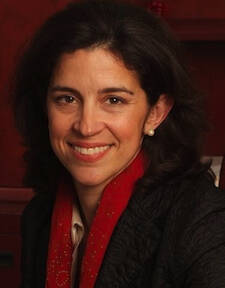Most Americans probably think that Catholics talk about the subject of the relationship between men and women to the point of exhaustion. But we don’t. We have rather peered into every corner of their sex lives and by turns gossiped and wrung our hands over couples’ failure to gel or their falling apart. As to the natural and divine significance of the fact that there are two sexes, drawn to one another in a one-flesh bond? As for this being the origin of all human life, all human society? Of this we say very little of consequence.
This should change for reasons both natural and divine. At the natural level it only becomes clearer week by week, as the tides of qualitative and quantitative evidence roll in, that the differences and similarities between men and woman matter. Biology sees it even at the cellular level. Eminent business consultancies advise clients to harness it. Psychological and sociological data regularly show both the unique and the overlapping talents of men and woman. Women on both sides of the political aisle affirm it. And outcomes for children and communities deprived of fathering manifest it.
There is also the sheer fact of a two-sexed humanity that gives birth to all human life. That’s a “wow” all by itself and deserving of study, care and conservation.
Layer onto this the central role marriage plays in Christians’ understanding of the economy of salvation. From the Old Testament to the closing scenes of the New, God’s identity and relationship to humanity is explained with spousal analogies. The Scriptures point to marriage and family life as the school for learning the meaning of life as loving mutual service and sacrifice—Jesus’ way of life.
Sex, marriage and parenting are pre-eminent themes of our age. Scholars, activists and film-makers cannot stop investigating them. Recent popes have paid them extraordinary attention. Pope John Paul II taught that misunderstanding the “complete and indissoluble human communion” in marriage “would make incomprehensible the very work of salvation.” Pope Benedict XVI called marriage “the icon of the relationship between God and his people and vice versa.” And Francis, after devoting years to family themes, has said that “God’s alliance with us is represented in the alliance between man and woman.”
Religions and cultures across the globe and throughout history have also affirmed the natural and divine significance of the relationship between the man and the woman. At the Humanum conference at the Vatican two weeks ago, Pope Francis and leaders from 14 religions and 23 nations mined a wide-ranging vocabulary to speak about the natural and divine meanings of a two-sexed humanity. Religions of East and West spoke of “cosmic polarities,” of nature’s dualities harmonizing to reflect the oneness of God, of Yin and Yang and of men and women changing and elevating one another.
Reaction against exploring the meaning of the male/female union can be harsh. The notion of “complementarity” is branded a plot against women’s equality. Marveling at procreation is called a tool for putting women on a pedestal in order to sideline them. Throughout, there lurks a suspicion that any talk of the ties between men and women and of their procreative potential is narrowly directed to undermining respect for those seeking same-sex unions.
In order to move forward toward acknowledging that a two-sexed, procreative humanity matters a lot, it is necessary to deal with these reasonable fears. We have to correct interpretations of “complementarity” that fail to begin with the radical equality of men and women. We have to admit that some responses to women’s fertility demeaned both women and children. We may even have to face the possibility that deep disorders of our human nature incline us to fear giving proper value to caring for others and to diminish people different from ourselves—whether these are of the opposite sex or people attracted to the same sex. But at the same time, we really have to find a way to move forward to nurture and promote the natural and divine wonder that is the male and the female together.








